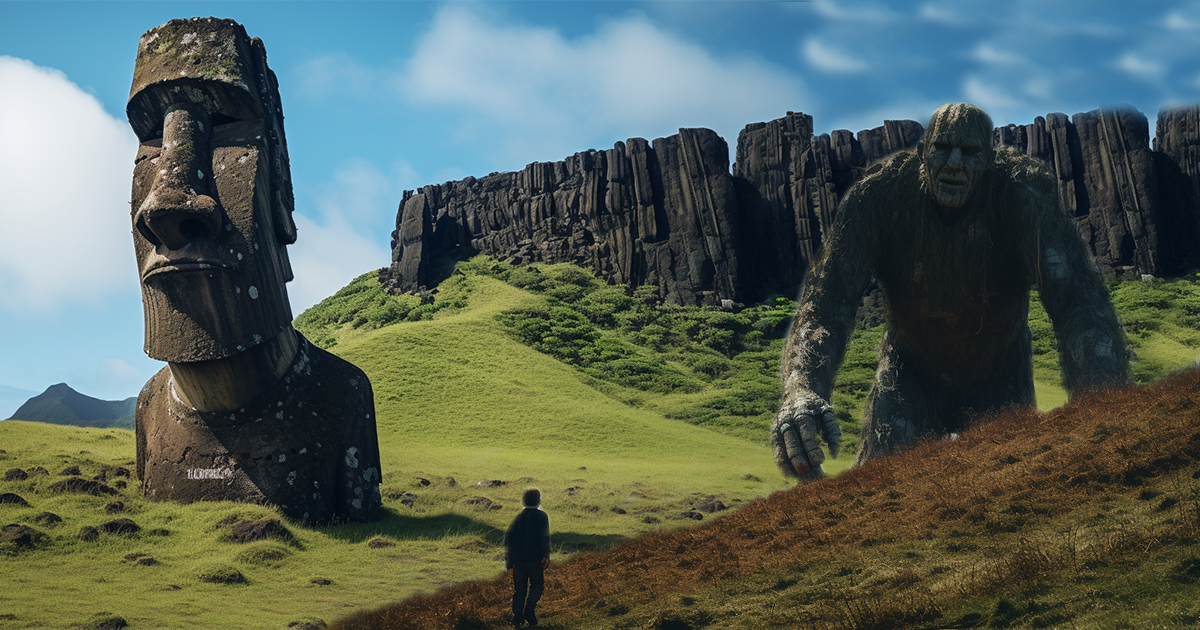Situated in the secluded depths of the Southeast Pacific Ocean is Easter Island, also known as Rapa Nui, shrouded in mystery and isolation. This remote island, located more than 1,100 miles from its closest inhabited neighbor and over 2,000 miles away from mainland Chile, has fascinated adventurers, historians, and proponents of ancient astronaut theories for ages.
Easter Island is renowned for its array of nearly 300 towering stone statues known as the moai. These massive sculptures, mostly facing inland, have confounded researchers for centuries.
Ranging from 15 to 70 feet tall and weighing a remarkable 165 tons, the creation of these monumental figures poses a fundamental question: what inspired the island’s inhabitants to embark on such grand building endeavors?
As per the current Rapa Nui inhabitants, the native islanders credit the construction of the moai to their deep veneration for revered ancestral ariki or leaders.

Despite this, proponents of ancient astronaut theories introduce a novel hypothesis – positing that the moai could have been erected by an ancient race of giants that once inhabited the island.
The intriguing tales from C.F. Barons, a member of the Dutch expedition that initially encountered Easter Island in 1722, inject a sense of fascination into this idea.
Barons recounted interactions with members of the island’s priestly class, described as giants, towering at around 15 feet tall.
Adding complexity to the island’s story is the division between its two distinct population segments: recognized as the short ears and the long ears. The long ears, often linked with giants, comprised a separate group from their short-eared counterparts.
Distinguished by their elongated earlobes, the long ears constituted the elite priesthood responsible for supervising the sculpting and movement of the statues across the island.
The substantial size of the megaliths on Easter Island has sparked speculation about the possibility of them being crafted by giants, a notion that echoes legends from various cultures, hinting at a potential connection between ancient giants and monumental structures.

Nevertheless, a cloud of uncertainty hangs over the island’s past. Despite sustaining a population of up to 15,000 residents prior to Western interaction, Easter Island witnessed a rapid decline.
A mere 52 years after James Cook’s voyage, the moai statues on the island lay in ruins, and the population shrunk to just 700 survivors.
What triggered such a drastic downfall? Curiously, historical records from that time make no mention of giants, creating a captivating gap in our understanding of the island’s history.
Some advocates of ancient astronaut theories present a compelling theory regarding the vanishing of Easter Island’s populace. Archaeological findings reveal abandoned and unfinished moai statues in quarries alongside scattered tools. The abrupt halt in construction and the fate of the giant priestly class overseeing the projects remain a mystery.
Could it be that Easter Island was a site for genetic experiments orchestrated by extraterrestrial beings, as proposed by certain theorists? They suggest that remote locations like islands, lofty mountains, and cliffs were chosen to prevent interference or contamination in these experiments.
Discover the Video Below:
While these theories may be enthralling, the real saga of Easter Island remains elusive. The stoic moai statues endure as guardians of a past intertwined with enigmas. Even though we may never untangle all the mysteries of this puzzling island, the fascination of Easter Island and its cryptic history will undoubtedly captivate the human intellect for generations to come.
